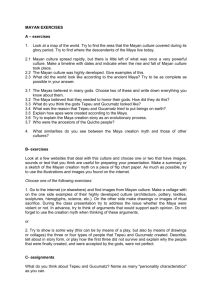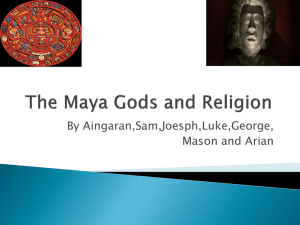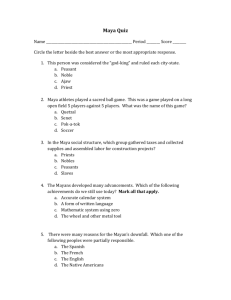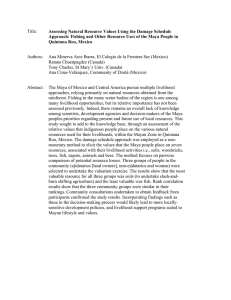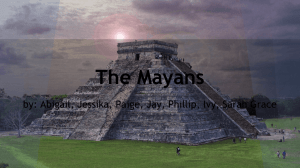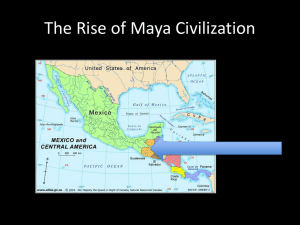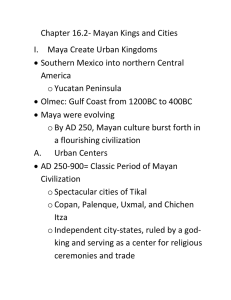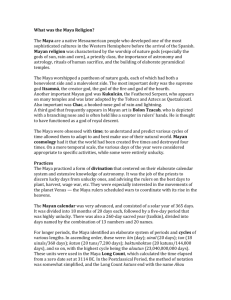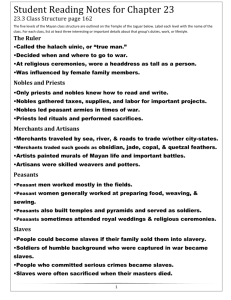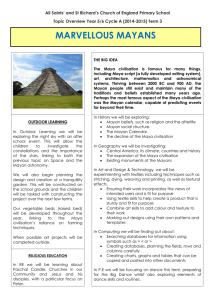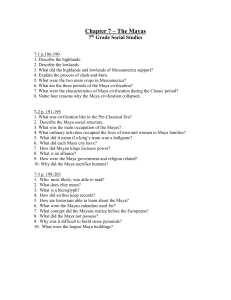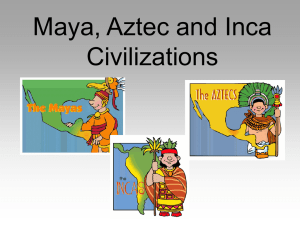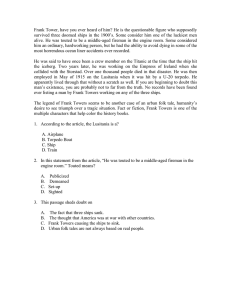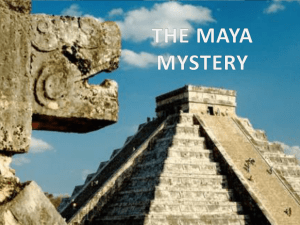Maya Powerpoint - Mr. Kazmark.com
advertisement
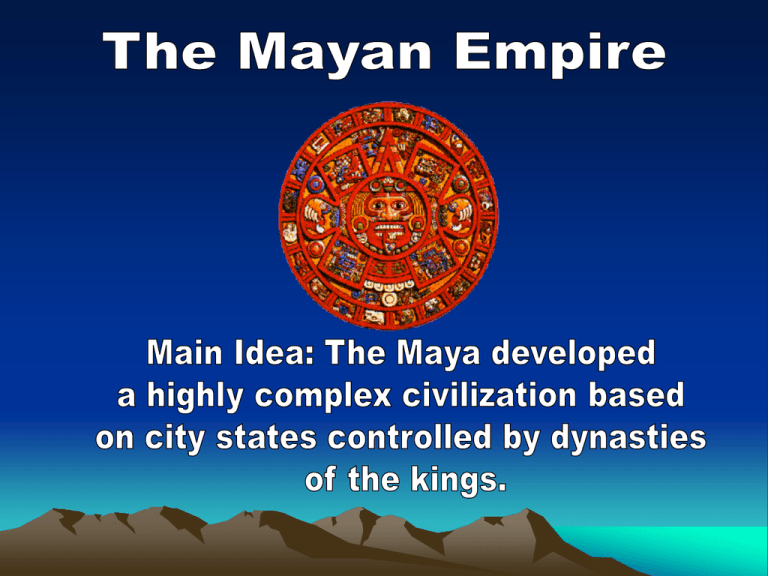
•The homeland of the Mayas stretched all the way from southern Mexico into Northern Central Mexico. • The Mayan civilization lasted from 250 A.D. – 900 A.D. Influenced by the Olmec on the Gulf Coast of Mexico, The Maya built spectacular cities such as TIKAL. •Mayan city of TIKAL. •Each of the independent city states were ruled by a god-king and served as a center for religious ceremonies and trade. • Mayan cities featured giant pyramids, temples, palaces, and elaborate stone carvings dedicated to the gods. •The city-states were connected through alliances and trade. •The Maya had no uniform currency, but cacao (chocolate beans) sometimes served as one • The growing of maize, beans, and squash provided the basis for Mayan life. •Successful farming methods led to the accumulation of wealth and the development of social classes. Mayan King: Holy figure whose position was hereditary The Noble Class: Priests and Leading Warriors Bottom Rung: Peasant Majority •The Maya believed in many gods who inhabited 13 layers of the sky and 9 layers of the underworld. • There were the gods of corn, death, rain, and war. Gods were also associated with the four directions and with different colors. They believed each day was a living god whose behavior could be predicted with the help of intricate calendars •The Mayas made offerings of foods and flowers. •They also committed acts of human sacrifice to appease the gods and keep the world in balance. • The Maya believed that time was a burden carried on the back of a god. For this reason they developed an accurate calendar system to predict the moods of the gods. •The Maya based their calendar on careful observations of the planets, sun, and moon. •The Mayan astronomers were high skilled and used great precision in developing a math system that included the concept of zero. •The Maya developed the most advanced writing system in the ancient Americas. They wrote using 800 hieroglyphic symbols, or GLYPHS. • They wrote in books made of bark called codex, in which only three survive today. • In the late 800’s the Maya suddenly abandoned many of their cities, never to return. •Many speculate that over farming the land, overpopulation, and civil wars caused many of the Maya to flee the cities for protection in the jungle. •By the time the Spanish arrived in the early 1500’s, the surviving Maya gave little hint to their former glory.

